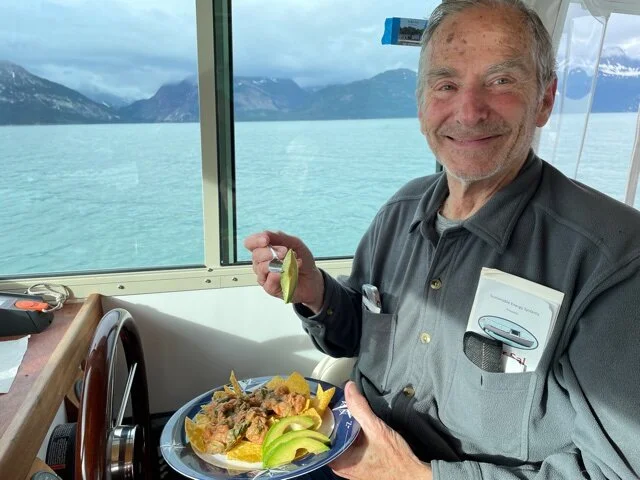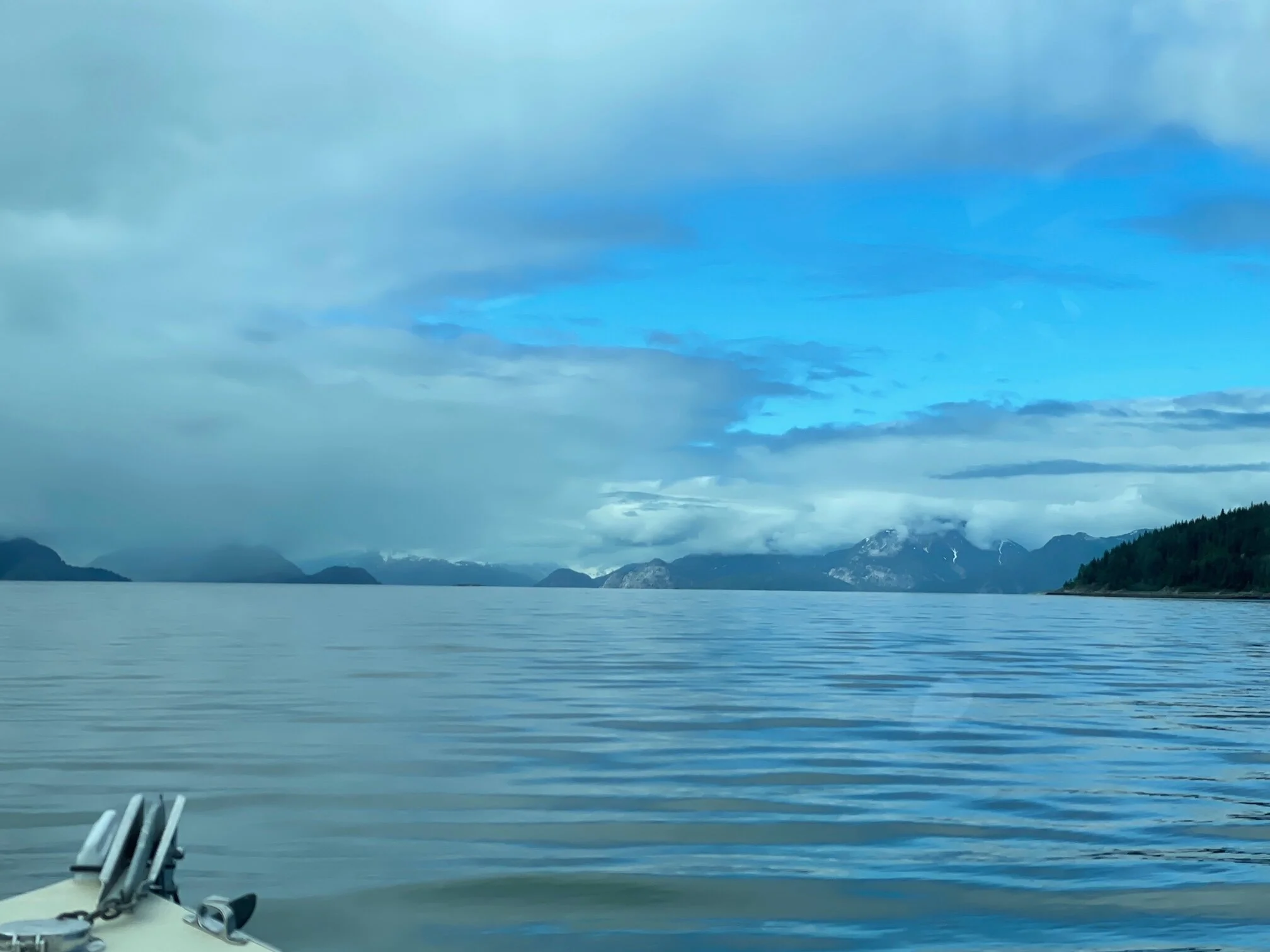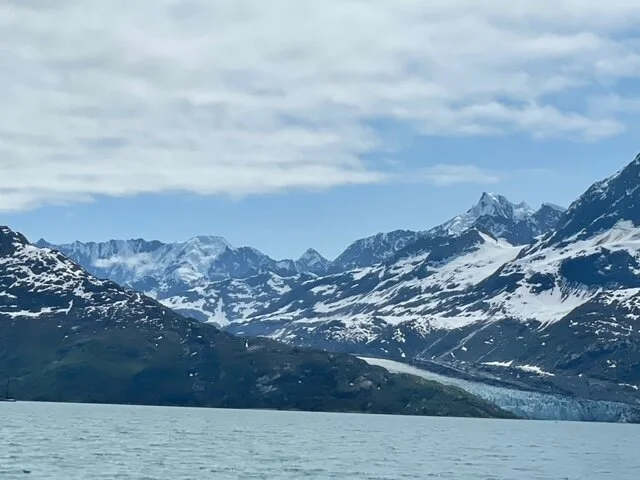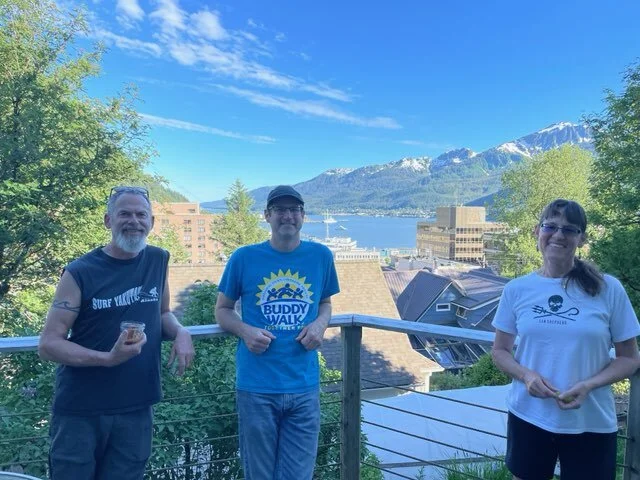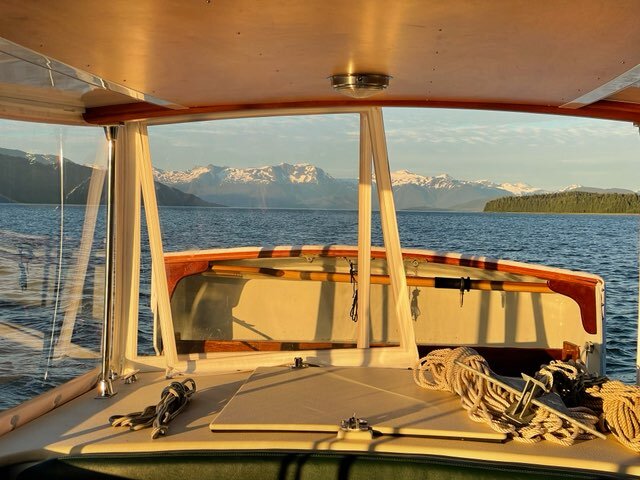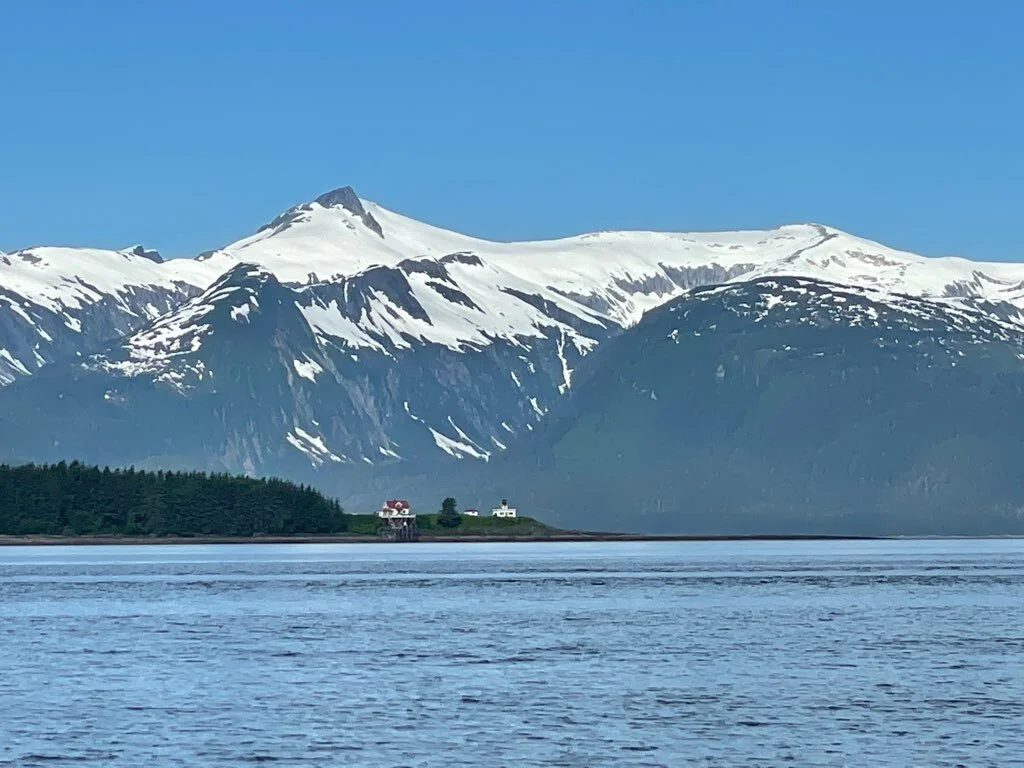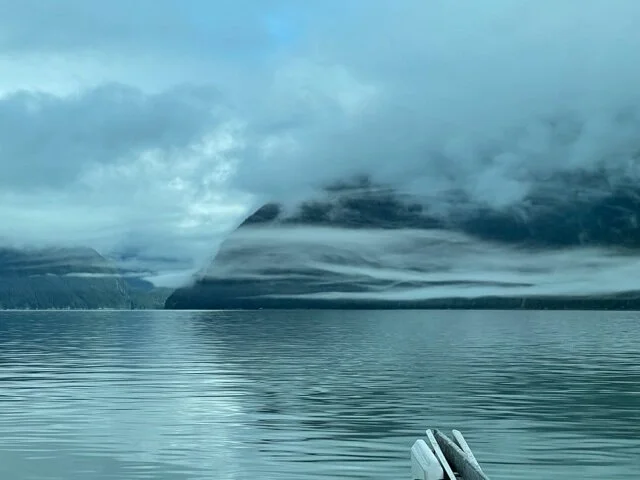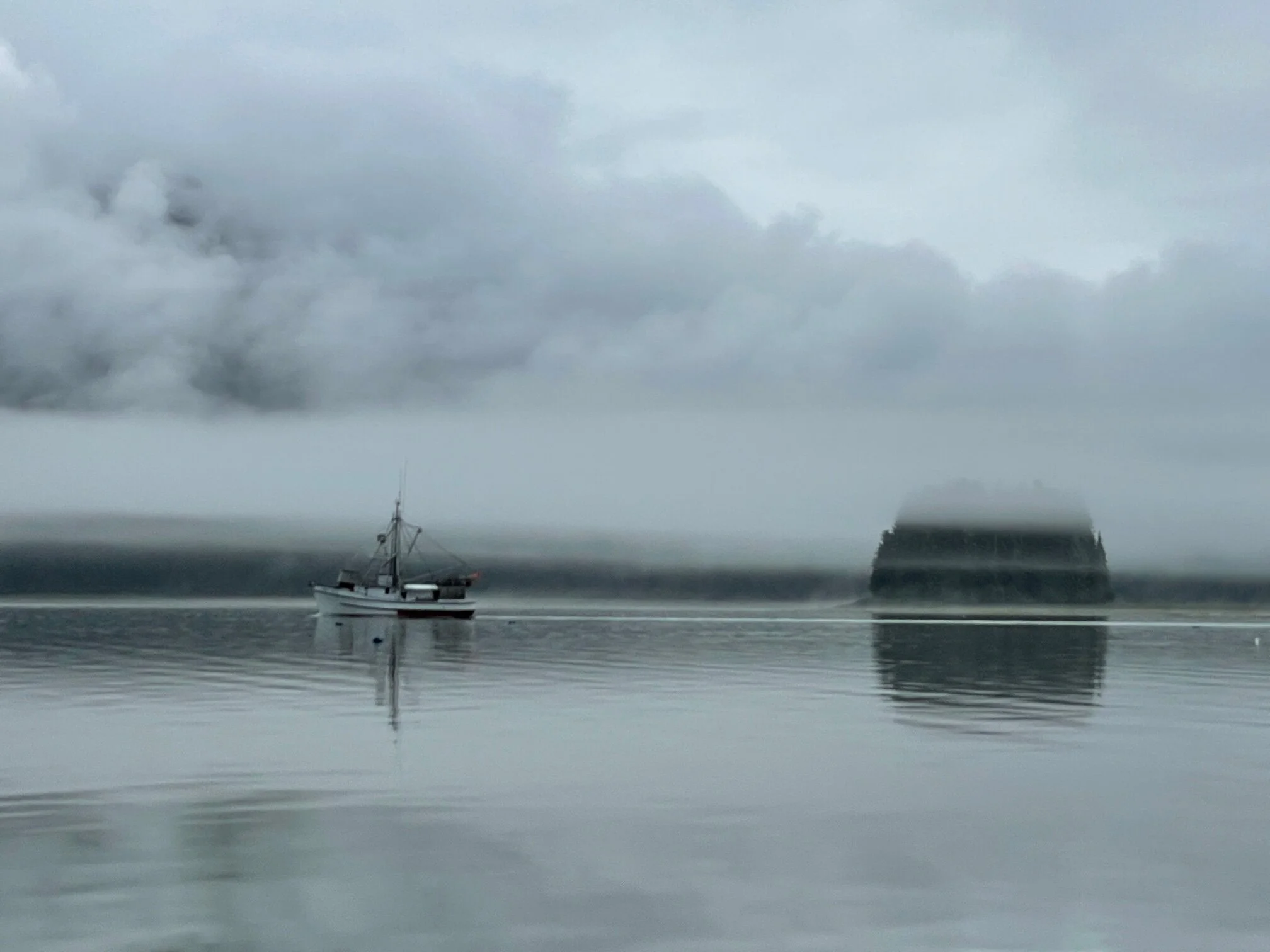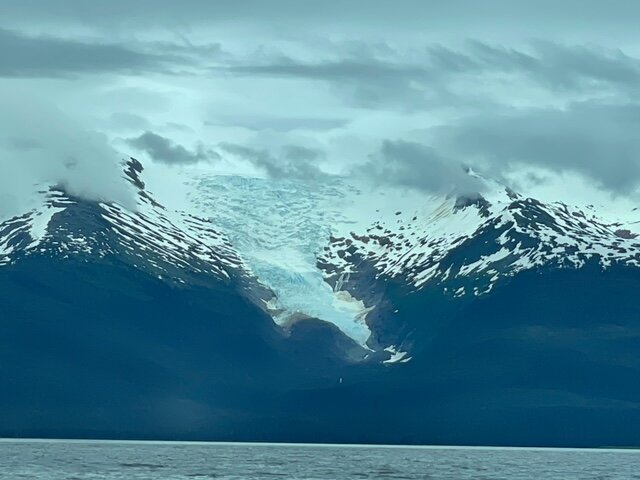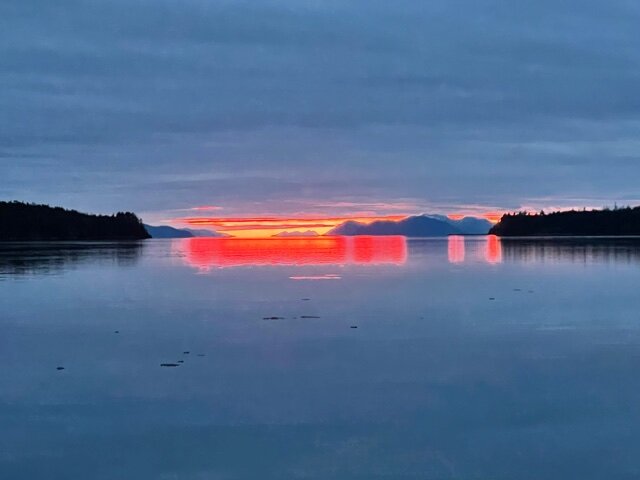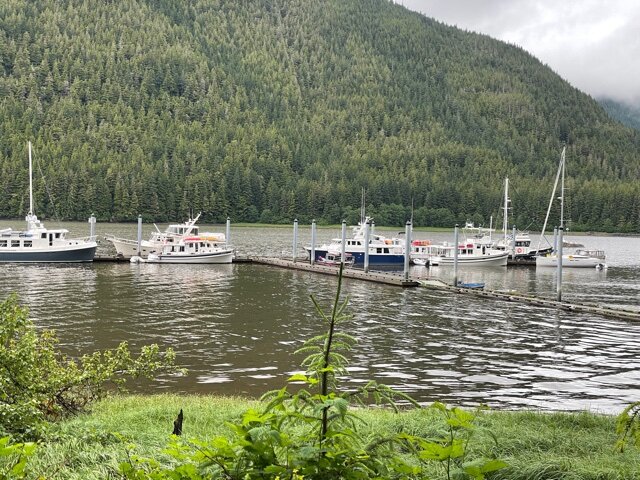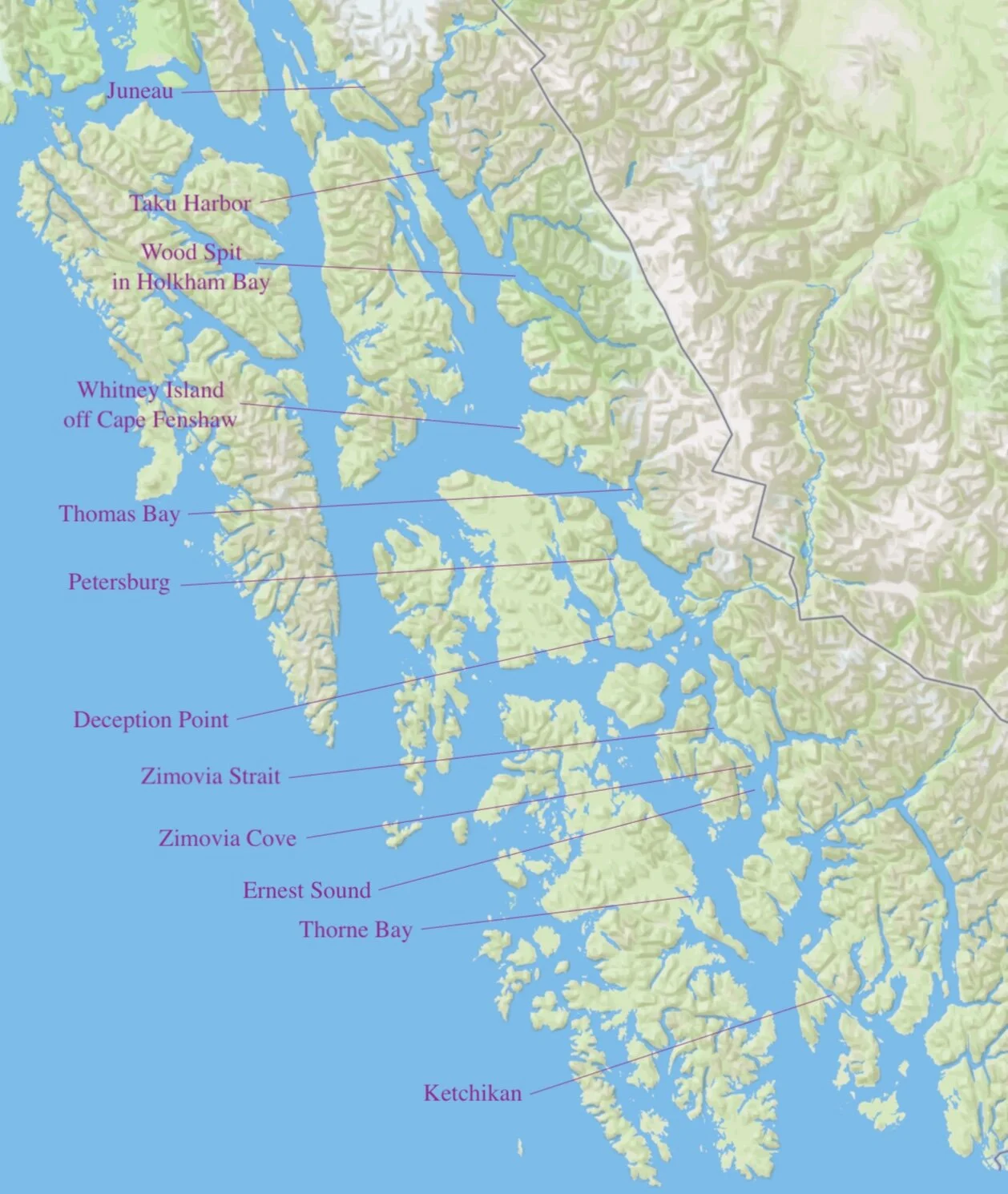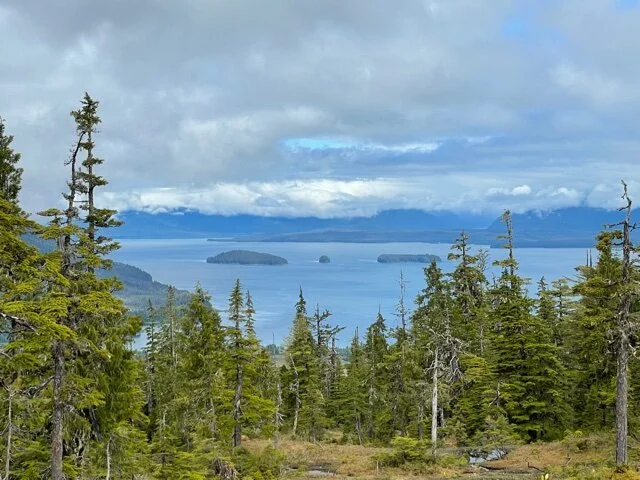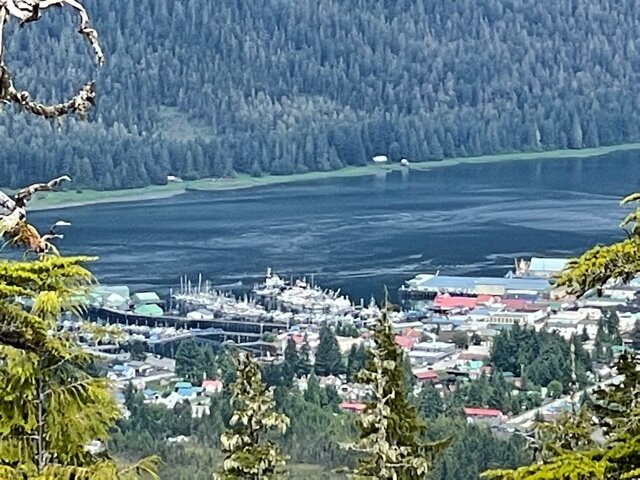Post-Epiblogue
It all begins with an idea.
NOTE: To see posts describing the first part of this voyage, starting from Bellingham, click on the menu bars at top right of the screen and select “The Journey”.
_______________________________________
July 14
I thought the previous post was the last, but there are recently-arrived photos and a video that are too good not to share.
And to summarize:
Left Bellingham May 25, Arrived Juneau for the final time (after going to Glacier Bay) July 8
Distance traveled: 1216 nautical miles (1400 statute miles)
Wayward Sun and Glacier. Taken by Alex while out in dinghy
Alex on commercial boat in Glacier Bay
Sea Lion Island (Glacier Bay)
Kai about to take tram up mountain behind Juneau
Alex and Kai at the top
On beach at Juneau. The beach is all gold mine tailings where the old mining town of Douglas was built on pilings before it burned down in the 1940s.
Epiblogue
It all begins with an idea.
July 10
David arrived home Tuesday night, July 6. Alex, Kai and Ruby spent one more day at Glacier Bay and then took Wayward Sun back to Juneau, anchoring overnight in Couverden Island Bay and arriving in Juneau on July 8. Kai and Ruby fly back to Seattle on July 10, but Alex and Wayward Sun will explore Juneau and surroundings for another week. Wayward Sun will ride the ferry to Bellingham on July 18, and Alex will then fly home. A TV station in Seattle has said they are interested in an interview on return.
We are all excited that the voyage was successful—Wayward Sun was the first solar boat to complete the trip from WA state to Alaska: 750 miles to Ketchikan and then another 350 miles to Glacier Bay! Alex and David had the option of using shore power, but they chose not to thereby demonstrating that solar alone can power the boat even when the weather is consistently cloudy and rainy. 100% solar boats eliminate the “range anxiety” of electric-only boats. With a solar boat, it’s not how far you can go but how fast you can go--obviously faster on sunny days and slower on cloudy days, but the distance is unlimited.
They collected a lot of data on the boat performance that will take a while to process. David writes:
“Starting in Ketchikan (the first spot we were allowed ashore), then Thorne Bay and up to Juneau and Glacier Bay we made new friends and enjoyed interactions with friends of friends, all vaccinated. Many appreciate the details of the boat’s performance and others just ask the speed. In Wrangell Narrows we went 11 hours at 4 knots up with the flood tide and down with the ebb without using the battery, +/- 3%. We have excellent hourly data on speeds and (lack of) sun available. The battery storage versus voltage depends on whether we are charging the battery or discharging. These nerdy details are important to making excellent Solar Sal boats.
My goal for this trip was Alaska, specifically Thorne Bay where 58 years ago I was a logger. From an isolated logging camp on the shore, Thorne Bay has evolved into a city on a road system that goes the length of Prince of Wales Island. We found nice folks everywhere, and I appreciated the chance to revisit.
Juneau was great. The trip to Glacier Bay was ice on top of the glacier.”
Glacier Bay Showtime
It all begins with an idea.
June 30 - July 4
Today’s post features lots of photos and videos. But first, a description from the horse’s mouth (David):
There are 3 reasons we hung at anchor all day in Couverden Bay. The first was we did not have a Permit to enter into Glacier Bay. The National Park Service limits the number of boats in Glacier Bay both to protect the animals and to make it nicer for visitors with a pass. Our third attempt to get a pass worked. The second reason at anchor was our batteries were low and the third reason was it was “blowing like stink”.
July 1 we set out from Couverden Island at 6:30 am and rounded the corner into heavy wind and 3 foot waves. We tried different angles into the wind and waves, and it just kept getting worse. Being prudent we considered various options. While we were considering it stopped getting worse and we were in fact making headway. It was a good decision to keep going as it slowly got better. We made it to a semi-protected spit on the north side of Pleasant Island, across from Gustavus.
July 2 we started out at 1:30 AM to catch the ebb tide going past Gustavus and toward the flood tide into Glacier Bay. Because of the rain and snow melt there is more water going toward the sea than coming back so the flood is often quite reduced compared to what the books expect. Alex radioed the NPS, and we entered Glacier Bay heading north until the ebb started and we stopped in Finger Bay for about 6 hours. We then continued north to Blue Mouse Cove for the night. A humpback whale came within 25 yards of the boat to welcome us at anchor.
July 3 was our glacier day. We used the weak flood to go all the way north above the 58 North Latitude parallel to the Margerie Glacier. There are many whales to see and uncountable numbers of sea otters along the way. An excursion boat left as we arrived, and we had a long lunchtime alone at the glacier face. It is noisy with creaks cracks and booms as the glacier slowly moves into the sea. We saw several small chunks fall and splash into the water while we drifted among many small icebergs. Many creatures hitchhike rides on these bergs: birds--small white gulls-- also eagles and harbor seals. A noisy fast catamaran arrived, stayed a little while with its engines off and then took folks back to Bartlett Cove. Our ice chest was replenished with bergy-bits of glacial ice. We saw 5 other glaciers from a distance and returned with the ebb to Blue Mouse Cove and the local whale.
4th of July we celebrated by traveling out to Bartlett Cove where the Park service has its headquarters and there is a resort hotel. The Glacier Bay Lodge is booked solid and is not serving food because of Covid. We did however buy showers! We tied up at the 3 hour dock and heard a good talk about the whale that was run over by a cruise ship and then the bones were turned into a skeleton that is on display right here. We’ll be anchored in the Bay for the next several nights.
On the 5th I get replaced on the boat by Kai and Ruby. I fly out of Gustavus on the plane they arrive in.
Dining in Glacier Bay
Icebergs and Sea Lions
In the clouds
Lamplugh Glacier
Reid Glacier
Mountains and Clouds
Exploring Glacier Bay
It all begins with an idea.
July 1-4
Alex and David arrived at Pleasant Island Cove on July 1 as planned, and they left that anchorage around 1:30 am on July 2 (the first day of their permit) to head into Glacier Bay. After checking in via radio and traveling for about 8 hours, they stopped to anchor and rest in the south end of Fingers Bay, on the west shore. They then resumed their travel north, getting to Blue Mouse Cove on the SE corner of Gilbert Peninsula for the night.
“So far yesterday and today weather has been overcast, with a ceiling at about 4000 feet, so we can’t see the tops of the big mountains. But the valleys are spectacular. This place is filled with steep fjords and steep granite walls and U shaped valleys. Lots of sea otters lying on their backs and sticking their heads up to peer at us. We also saw several small groups of humpback whales yesterday. Some closer than others. One was about 25 yards from us when we anchored last night.”
They started out about 4:30 am on July 3, heading to Tarr inlet and the Margerie and Grand Pacific glaciers. The reason for the early start was to ride whatever flood there might be. It’s a Long way to the glacier, about 24 miles. They reported spending a long lunch at the glaciers, and the sun came out while they were there —“it is glorious!” For the night of July 3, they returned to Blue Mouse Cove where they spent the previous night.
July 4 they headed to Bartlett Cove where they need to be the next day for getting to the Gustavus airport to meet Kai and Ruby (his sitter) and to take David to his flight to Seattle. Bartlett Cove has the park visitor center as well as a hotel, where they can get showers, and taxis to the airport. Alex said they would have spent another night in the wilderness but, because of currents, it made sense to get there a day ahead. Otherwise they would have had to leave at 2 am on the 5th.
They've taken lots of photos and videos, but can’t send them until they have cell service again. Hopefully the next post here will be full of pictures!
Heading to Glacier Bay
It all begins with an idea.
June 27 - 30
The guys had a very good time in Juneau. Through various contacts, they enjoyed socializing with several people, including a friend of Troy friends and a new friend they met in Thorne Bay who even invited them home for dinner!
Late Monday afternoon, June 28, they left Juneau to head towards Gustavus, the entrance to Glacier Bay. After an evening of great sunshine and beautiful views, they anchored in Admiralty Cove.
The next day they traveled to Couverden Island Cove, where they anchored overnight while awaiting word of admission to Glacier Bay. Permits are limited and hard to get. They finally succeeded in getting a pass from July 2-8. The plan now is to stay put tonight and travel tomorrow (July 1) to Pleasant Island Cove on the northeast side of Pleasant Island, just south of Gustavus. They will then be well positioned to enter Glacier Bay on July 2.
Future Schedule: On July 5 Alex’s son Kai and his sitter will fly to Gustavus. And right after their arrival David will get on that same plane and begin his travel home to Troy. Kai and Ruby will remain with Alex and the boat, and after some additional time in Glacier Bay, they will cruise with Alex back to Juneau for their flight home to Seattle on July 10. Alex and Wayward Sun will hang out in the Juneau area until the boat gets on the ferry to Bellingham on July 18 and Alex flies home.
With Marsha and Willie, friends of Troy friends
At Clay Good’s home in Juneau
View from stern, nearing Admiralty Cove
Point Retreat, on the way to Couverden Island. Glacier Bay is on the other side of the mountains.
Satellite view of the region
Arrival at Juneau
It all begins with an idea.
June 26
After spending Thursday, June 25, hunkered down in stormy weather, David and Alex were able to travel on Friday even though conditions were still rainy and windy. They made it to Taku Harbor, where they anchored for the night. Saturday was better, although still cloudy, and they arrived at Juneau about 3:30 PM-- one month and one day after leaving Bellingham on May 25. They expect to see several people there who have expressed interested in the trip and the boat. They have cell service again and sent a few photos and videos of the past couple of days.
Thomas Bay
Fog
Sumdum Glacier
11 PM
Company at Taku Harbor (Wayward sun is anchored off-screen to the left)
Exploring Taku Harbor
At Juneau, Arrived Sat afternoon June 26. Wayward Sun docked at far right.
Route Map from Ketchikan to Juneau. About 320 miles
Traveling up Stephens Passage
It all begins with an idea.
June 22-24
Alex and David left Petersburg Monday afternoon and anchored in Thomas Bay overnight. On Tuesday, June 22, they waited until noon to catch the tide and then anchored in the evening at Whitney Island, off of Cape Fanshaw.
Wednesday they traveled to Wood Spit in Holkham Bay-- a good spot to wait out the heavy rain and high winds forecast for the following day. Thursday was indeed a gloomy day.
David writes:
“In several places like Cape Caution and Dixon Entrance the waters are directly exposed to the Pacific and look out to Russia. Navigating requires a lot of attention. Otherwise, even in big water, there are islands with trees and often snow-capped mountains all around. Today we are in a bay sheltering from stormy winds. The overcast and fog are low and dense and it is usually raining. Looking out, the sky and the sea meet obscuring everything as if the ocean extends from here around the planet. No radio, no cell, no people adds some wildness to our hideout from the bad weather. Less than 2% of possible solar energy got here today.”
This was the first day since they started on May 24 that they have not been able to travel. Today (Friday) is still uncertain. At this point they have no cell or internet, hence no photos yet. Hopefully cell service will return when they get close to Juneau.
Onward From Ketchikan
It all begins with an idea.
June 14-21
After spending a few days with Harriet both in Ketchikan and across the water in Thorne Bay, David and Alex are now on Part 2 of the voyage, heading north to Juneau and then Glacier Bay.
Prince of Wales Island is the longest island in the U.S. Thorne Bay, where David spent a summer logging in 1963, was the island’s major population center and the world’s largest logging camp at the time. Now the logging camp is gone and Thorne Bay is a “city”— the place with a dock where barges can unload containers of goods. Besides the marina, the city includes a library, a bait and tackle shop, café, post office, town office, and a wonderful B&B where we spent one night. David, Alex and Harriet enjoyed walking around, finding one building David recognized, the large machine shop, and a variety of large and really large logging equipment. David enjoyed the library with its great collections of books and pictures of his time there, and he had fun talking to several old-timers who remembered the logging camp.
On Friday morning, June 18, Harriet got a float plane back to Ketchikan to begin her trip home. (Float planes are a way of life out there, bringing mail and tons of stuff from Amazon, in addition to passengers.) The guys left around midday, heading across Clarence Strait.
After crossing Clarence Strait and then Ernest Sound, they anchored that night in Zimovia Cove at the south end of Zimovia Strait. Skies cleared at the end of the day for a beautiful evening. Saturday was a gorgeous sunny day from beginning to end, which they thoroughly appreciated! It was the first (and hopefully not the only) one on the trip. The scenery was beautiful as they passed Wrangell before anchoring at Deception Point on Woewodski Island at the south end of Wrangell Narrows. On Sunday they left in the drizzle again, traveled through Petersburg narrows, and docked around midday at the Petersburg Marina where they spent a little time on land. On Monday morning David explored the town while Alex hiked up the Raven Trail, just outside town.
Exploring Thorne Bay
Leaving on a float plane
Thorne Bay from the air
Passing Wrangell
Barge on Petersburg Narrows
View from Raven Trail, outside of Petersburg
Looking down on Petersburg
__________________________________
NOTE: To see posts describing the first part of this voyage, starting from Bellingham, select the menu bars at top right of the screen and click on “The Journey”.








